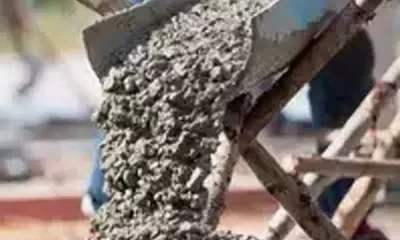Economy & Market
Precast tech has a lot of potential in India
Published
5 years agoon
By
admin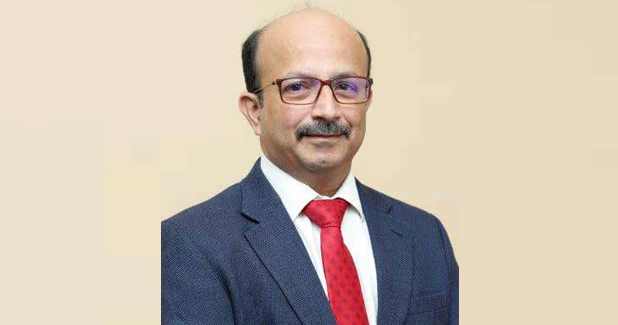
– Rajesh S Pandit, Head – QMD (Urban Infrastructure), TATA Projects
What are the basic grounds on which one should prefer precast technology for the infra projects and specifically projects like Mumbai metro?
Precast structures/elements are cast off-site under factory conditions in a large area with all relevant infrastructure in place. The facility is generally called as casting yard. These precast elements are typical in size and are produced continuously like factory production in specific sets of moulds. Many times, being in congested public place, space availability to perform construction activities is very less. Therefore, projects like metro, prefer precast elements, which can be cast at place away from site. It can be brought in at right time/stage and place in position during night times when there is minimum interference to construction or movement of heavy equipment.
Volume and repetition are the key parameters in choosing precast option as these determines the benefit of precast over in-situ if any. For the projects, TATA Projects is executing elevated metro, we are casting girders/segments of girders at casting yard. For underground metro, tunnel ring segments are cast as precast elements in casting yard.
Being produced in controlled conditions and with minimal manual interventions (unlike cast in-situ), it turns out to be of a flawless and superior quality concrete structure with utmost safety. It also creates a scope for speed augmentation as these elements can be produced independent of site activities/constraints and runs as a parallel activity.
Please brief us on where precast technology is used and where cast in situ is used in the present Metro jobs?
Metro projects can be broadly classified into two categories – elevated (above around) and underground. In elevated metro projects, TATA Projects is designing and casting superstructure (above Pier) elements like pier cap, girders or girder segments as precast elements. In case of underground metro, TATA Projects produces tunnel lining ring segments as precast element.
In terms of cost and speed if one uses conventional method of construction over precast, what will be the shortcomings? What are the advantages of using precast?
Precast technology enables to produce parts of structure offsite independently. These activities run simultaneously and does not have to follow sequential progress at site. The structures or elements of the structure can be shifted to site at right time and just to be mounted/erected at required place. As mentioned in previous sections, these elements are cast in factory precision conditions with almost all activities are performed mechanically with minimal human interventions. The safety and quality standards achieved are very high as compared in-situ works. The area for casting yard is big enough to accommodate/stack large number of such elements ahead of time. The process of casting, stacking and despatch of these element is meticulously planned and expedited as well.
Do you use any software package for QC? Are quality audits carried out at what frequency? What is the software used for managing the project?
At TATA Projects, we use in-house developed IT platform for monitoring quality functions for documentation, analysis and MIS purpose. An interactive dashboard and analysis of data serves as an input for decision making for improvement. Quality audits are integral part of quality management process implemented at site. Generally, building projects undergo audits once in six months and metro projects undergo quality audits every three months.
In short what tests are conducted on piles before taking up the job of placing pile cap? What has been overall feedback on pile testing?
Test pile undergoes initial load test. Once this test is completed and results are positive, routine tests are conducted at different frequency on working piles. Routine tests are:
Pile integrity test by sonic logging
Pile Integrity by low strain using ultrasonic pulse velocity
High strain pile dynamic test
Please provide us the details of concrete used in precast and in situ. Grade and minimum cement content? How do you ensure QC parameters?
The concrete grades vary for each structure. If you consider a typical elevated metro project, in-situ structures are pile, pile cap and piers. Pier cap can be in-situ or precast. Girders or girder segments generally fall in precast category. A typical example of precast or cast in-situ structural element details are shared herewith. The minimum cement mentioned in referred table is picked up from contract technical specifications:
Raw material (cement, aggregate, Pozzolanic material and admixture) are carefully selected, which comply with applicable specifications. The concrete is designed in such a way that it not only comply with performance requirement as per technical specifications but also is extremely user-friendly.
It is produced from state-of-the-art fully automatic batching plant. It is regularly inspected and calibrated to ensure it is performing accurately. A well defined quality inspection and test plan is implemented to cover different tests on raw material before it’s use, tests on concrete during and just after production.
A team of an experienced quality control engineer and skilled technicians is deployed round a clock to monitor quality control process. A full-fledged quality control laboratory is established (near batching plant) and is equipped with calibrated equipment, which caters to all testing and monitoring needs.
Statistical analysis tools are adopted to continuously monitor performance Indices of concrete and necessary course corrections are made to keep it optimum. It also helps to predict trend and take proactive actions to avoid surprises.
How about the placement of seismic arrestors in the structure? Seismic arrestors are installed above pier cap and there is a groove where the shear key fits in our elevated metro projects currently in execution phase in Mumbai. How many shapes of Girders used in the super structure?
Generally, in metro projects (elevated), "U" shape, "C" Shape and "I" shape of girders are prevalent. Whereas, infrastructure projects (major bridges) are also designed with trapezoidal box (hollow from inside) girders (or segments) commonly.
It is learnt that for using precast technology of construction, one needs trained and highly skilled man power. What is the situation in our country with specific reference to your project?
The use of precast technology is evolving in India and is predicted as future of construction tomorrow by industry pundits. Factors like ever increasing paucity for skilled manpower, need for speed, quality and safety, etc. necessitated mechanisation of construction activities as much as possible.
The employment of skilled people who can handle formwork, casting with required quality/safety, transport of precast elements and safe heavy lifting operations at site for placement are very critical to successful management of precast construction. However, still Indian industry has a long way to go. We, in TATA projects, invest considerably in resources to induct/train continuously our skilled workers, front line supervisors and engineers in different activities before commencement of the critical activity for ensuring "first time right" and "Zero Rework" approach. Specialised vendors and industry experts are also roped in to train our workers for specific activities. The company has also rolled out technical handbooks covering almost all aspects of construction and home grown good practices in all streams (civil/mechanical/ electrical, etc).
Good practices are also shared through daily "quality triggers" across the organisation. Quality parks are established and utilised for training the workforce with mock-ups, models and samples for easy understanding. Daily quality toolbox talks are organised by field quality engineers to the workforce before start of any activity at site.
Kindly brief our readers on the use of technology as it is practised at your projects. How does it compare with that being used in other parts of world?
Automation in cutting and bending steel, usage of system form work, 3D and 4D, BIM, drone monitoring, HeliCranes in transmission and distribution projects, tunnel boring machines in tunnels for underground metro.
Can 3D printing technology become applicable to precast technology? Is it used in any part of the world?
Generally speaking, 3D printing is an in-situ casting without any mould/formwork with a machine whereas precast technology produces concrete elements by pouring concrete in a mould in a factory environment. Both may be complimentary for a total solution.
What do you think is the future of pre cast technology in India?
India is also going through rapid urbanisation and this has created a huge demand for adequate infrastructure and affordable housing segment which cannot be met through conventional construction and hence modernisation of construction industry must take place. It is not the infrastructure segment but also the building segment is showing immense interest in Precast technology.
Big developers and contractors like Amrapali, Purvankara, Brigade and BG Shirke are constructing millions of square feet in a year by precast technology and a lot of others are taking steps to implement precast technology. However, for the technology to truly take off, the Indian government has to provide favourable tax benefits to developers to implement modern technologies. There is definitely a lot of potential in India to become a major global market for precast technology. A few good examples will set the pace right and there won’t be any looking back then.
In the US, AASHTO has developed standard beam design for various load and geometrical condition and standard concrete beams are available for various spans and load conditions for ready usage. Unfortunately, this is not the situation India because there are no standard size available in India codes – even for road over bridges crossing railway where a good amount of standardisation can be done. There are a few technical challenges like filling the gaps between panel joints, waterproofing, thermal expansion/contraction, etc. Structural joints in seismic zones are difficult to achieve.
Moulds for the precast segments of underground metro.
Stacking of finished segments in casting yard
Precast girder segments for infra project (bridge)
Economy & Market
Indian cement industry applauds budget FY25 for focusing on decarbonisation
Published
3 days agoon
July 24, 2024By
Roshna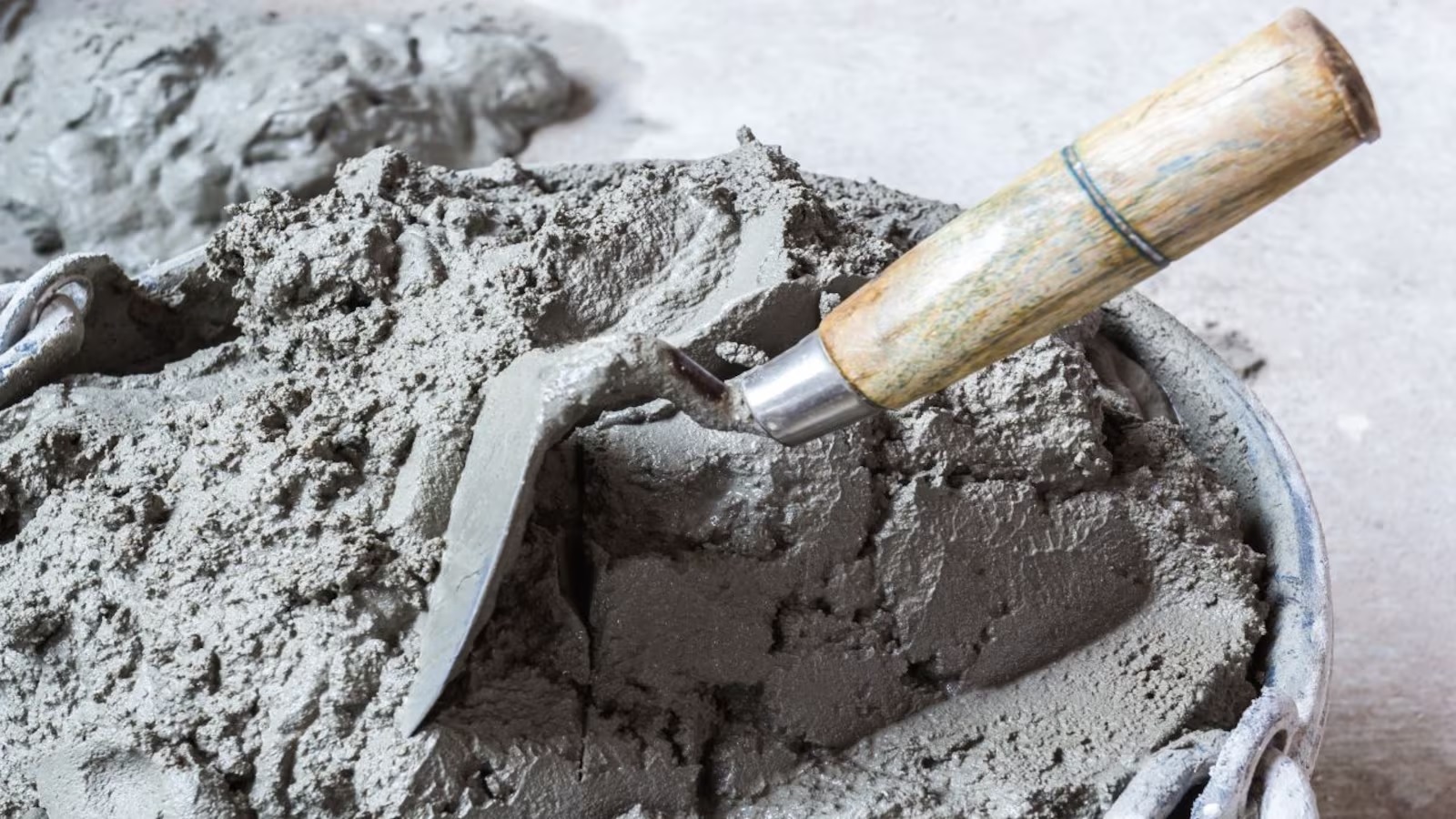
The Cement Manufacturers Association (CMA) has applauded focus on infrastructure development and decarbonisation in union budget FY25.
New Delhi, July 24, 2024
The Cement Manufacturers’ Association (CMA) – the apex body of large cement manufacturers in India that represents almost 75 per cent of the country’s total installed cement capacity – has welcomed the Union Budget 2024-25 presented by the Finance Minister Nirmala Sitharaman yesterday. According to CMA, the budget presents a commendable vision for India’s economic growth, with a strong emphasis on infrastructure development, employment generation and energy security.

Commenting on the budget, Neeraj Akhoury, President, Cement Manufacturers’ Association (CMA) and Managing Director, Shree Cement Limited, stated, “Against the backdrop of global uncertainties and inflation, the Union Budget 2024-25 is transformative and forward looking with an eye on fiscal consolidation. The announcement of Rs 11 lakh crore capital expenditure signifies the Government’s commitment to modernising India’s infrastructure through various significant projects and allocations, which will undoubtedly drive demand for cement and other building materials. These initiatives collectively illustrate the budget’s comprehensive and strategic approach to bolstering India’s infrastructure across various sectors.”
He added, “The cement industry is in alignment with the Government of India’s net zero goals. The transition roadmap for ‘hard to abate’ industries to move from the ‘Perform, Achieve and Trade’ mode to the ‘Indian Carbon Market’ mode is a welcome step. The roadmap will further boost India’s energy infrastructure and encourage renewable energy adoption. Overall, this Budget is a win-win for both the economy and the environment, and the cement industry is poised to play a pivotal role in the nation’s development journey.”

Parth Jindal, Vice President, Cement Manufacturers’ Association (CMA) and Managing Director, JSW Cement Limited, said, “The budget indeed paves the way for a robust and resilient economy, fostering growth that is both equitable and sustainable. Its focus on employment, skilling, and urban development is a significant step towards inclusive growth. The Prime Minister’s package, with its emphasis on skilling and employment linked incentives, will not only further enhance workforce capabilities but also generate new job opportunities within the cement sector. As the cement industry is transitioning and adapting to newer technologies, India needs a workforce that is skilled and equipped. The allocation of Rs 1.48 lakh crore for education, employment, and skilling initiatives stands to have a huge impact on creating a skilled workforce that can contribute effectively to the cement industry. The cement industry is a major contributor to employment generation in India. The cement industry welcomes the budget’s strategic initiatives and is committed to supporting these efforts through innovation and sustainable practices.”
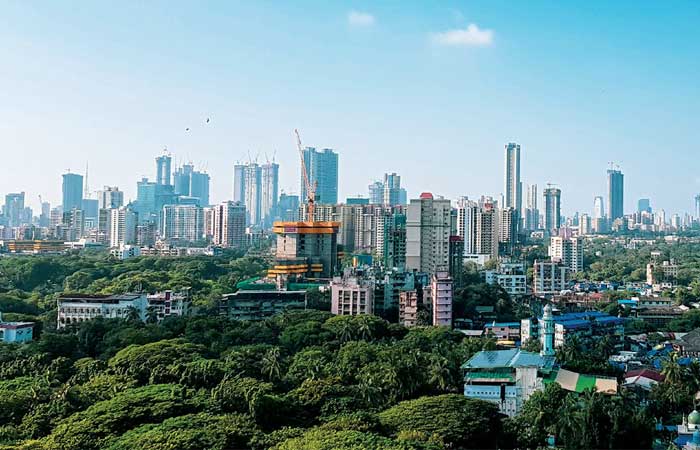
The Indian cement industry, among the world’s largest, plays a pivotal role in national infrastructure and economic growth. Driven by robust demand, it continues to expand. ICR delves into the mergers and acquisitions currently underway with major cement players, in a bid to lead capacity expansion.
The Indian cement industry is one of the largest in the world, playing a crucial role in the nation’s infrastructure and economic development. Over the past few years, production has steadily increased, driven by robust demand from both urban and rural areas. Major infrastructure projects, housing developments, and government initiatives like ‘Housing for All’ and ‘Smart Cities’ have significantly boosted cement consumption.
The industry is characterised by a diverse range of players, from large multinational corporations to small local manufacturers, all contributing to a highly competitive market. Consumption trends indicate a strong preference for blended cements due to their environmental benefits and cost-effectiveness.
As the economy continues to grow, the demand for cement is expected to rise, supported by ongoing infrastructure development and urbanisation. This upward trajectory positions the Indian cement industry as a key driver of growth in the construction sector, with a focus on sustainable and innovative practices to meet future challenges.
According to the Infomerics Ratings report dated March 2023, the size of the global cement market reached US$ 363.4 billion in 2022, and it is expected to grow at a CAGR of 5.4 per cent during 2023 – 2028 to reach US$ 498.23 billion by 2028. The cement industry was expected to add 21.2 million tonnes per annum (mtpa) of manufacturing capacity in the year 2022-23. During the period, projects worth US$ 71.8 billion were expected to get commissioned. This would have been the fourth successive year, wherein the industry added more than 20 mtpa of manufacturing capacity. Between 2019-20 and 2021-22, the industry added a total of 81.1 mtpa of manufacturing capacity. The capacity utilisation of cement industries decreased from 66.2 per cent in 2018-19 to 60.3 per cent in 2021-22. There was contraction in demand and production during the pandemic.
India’s commitment to development
Infrastructure development in India is a major driver of cement demand. The government’s focus on initiatives like ‘Bharatmala’ and ‘Sagarmala’ for road and port development, along with rapid expansion in railways and airports, has significantly boosted the cement industry. Policies such as the ‘Pradhan Mantri Awas Yojana’ aim to provide affordable housing, further increasing cement consumption.
Urbanisation is accelerating in India, leading to a surge in real estate development. With a growing middle class and rising urban populations, demand for residential and commercial spaces is expanding rapidly. This urban growth is a key factor driving cement consumption, as cities expand and modernise their infrastructure to accommodate new residents and businesses.
According to Invest India, the government has committed an allocation of 3.3 per cent of GDP to the infrastructure sector in the fiscal year 2024, with particular focus on the transport and logistics segments. Roads and Highways account for the highest share, followed by Railways and Urban Public Transport. The government has set ambitious targets for the transport sector, including development of a 2 lakh-km national highway network by 2025 and expanding airports to 220. Additionally, plans include operationalising 23 waterways by 2030 and developing 35 Multi-Modal Logistics Parks (MMLPs). The total budgetary outlay for infrastructure-related ministries increased from around Rs.3.7 lakh cr in FY23 to Rs.5 lakh cr in FY24, offering investment prospects for the private sector across various transport sub-segments.
India’s cement industry also has strong export potential, with several manufacturers targeting international markets in Asia, Africa and the Middle East. The competitive pricing and quality of Indian cement make it attractive globally, contributing to increased export volumes. As global construction activities pick up, particularly in developing regions, Indian cement manufacturers are well-positioned to meet international demand, further supporting industry growth.
Anticipated growth spurt
Indian cement manufacturers are actively expanding their production capacities to meet growing domestic and international demand. Major players like UltraTech Cement, Adani Group and Shree Cement have announced significant investment plans to increase their manufacturing capabilities. This expansion is driven by factors such as robust infrastructure development, government initiatives, and rising urbanisation.
These companies are strategically enhancing capacity through both greenfield and brownfield projects, focusing on regions with high demand and logistical advantages. Innovations in technology and sustainability are also key priorities, as manufacturers aim to reduce environmental impact while increasing efficiency. This wave of capacity expansion positions the Indian cement industry to cater to future demand surges, maintaining its competitive edge in both domestic and global markets.
According to the Department for Promotion of Industry and Internal Trade (DPIIT), the Indian cement industry had an installed cement capacity of 600 million tonnes and production of 391 million tonnes of cement in 2022-23. The Crisil Market Intelligence report mentions that to cash in on rising demand from infrastructure and housing sectors, the cement industry is on course to add capacity by 150-160 million tonnes from FY25 to FY28. It also states that the industry has added capacity by 119 million tonnes (MT) per annum to reach a total of 595 MT.
The Indian cement industry is witnessing two major acquisitions in the current times. UltraTech, India’s largest cement player owned by the Aditya Birla Group, has announced that its board has approved picking up a 23 per cent non-controlling stake in India Cements in a deal valued at around Rs.1,885 crore.
While the conglomerate Adani Group has grown its capacity from almost nothing to a total of 75 mtpa in three years, positioning itself as the second-largest player in the industry. The latest growth move is the buyout of Hyderabad-based Penna Cement Industries for Rs.10,420 crore. Currently, Penna Cement has a total capacity of 10 mtpa and another 4 mtpa is under construction. Once the deal is closed, the total capacity of the Adani Group’s cement business will expand to 85 mtpa. The group aims to achieve a production capacity of 140 mtpa by 2028, while market leader UltraTech Cement has set its sights on reaching a capacity of 200 mtpa.
“This landmark acquisition is a significant step forward in Ambuja Cements’ accelerating growth journey,” said Ajay Kapur, CEO and Whole Time Director, Ambuja Cements. “By acquiring PCIL, Ambuja is poised to expand its market presence in south India and reinforce its position as a pan-India leader in the cement industry. PCIL’s strategic location and sufficient limestone reserves provide an opportunity to increase cement capacity through debottlenecking and additional investment. Importantly, the bulk cement terminals (BCTs) will prove to be a gamechanger by giving access to the eastern and southern parts of peninsular India, apart from an entry to Sri Lanka, through the sea route. Our aim is to make PCIL highly competitive on cost and productivity and improve its operating performance.”
Other cement organisations in India also have major manufacturing capacity expansion plans. Shree Cement in February 2024 announced plans for capacity development in Uttar Pradesh (UP) which outlines the development of two cement factories: one in Etah and another in Prayagraj. Both projects are expected to cost approximately `2,000 crore and increase UP’s capacity to produce cement by almost 7 mtpa over the course of the following 24 months. One of Shree Cement’s current projects is a 3.5 mtpa facility in Etah, which is expected to start up in the upcoming year. Prayagraj is planning another 3.5 mtpa facility at the same time. Nearly 17 acres of land in Etah have already been purchased by Shree Cement, and building is under construction.
“New investments made in cement production facilities automatically come with the latest technological advancements that can enhance efficiency, minimise environmental impacts, and improve the quality of cement. This leads to construction practices that are more durable and sustainable. JSW, for instance, has initiated research on the integration of supplementary cementitious materials (SCMs) like fly ash, slag, calcined clay and more. These materials not only improve the durability and strength of cement but also contribute towards reduction of carbon footprint of the cement industry. In order to meet energy demands sustainably, we must look at better industry practices such as usage of waste heat recovery systems, high-efficiency coolers and preheaters, and transition towards clean energy sources like solar or wind power,” states Jigyasa Kishore, Vice President – Enterprise Sales and Solutions, Moglix.
JK Cement in June 2024 announced the commissioning of a new grinding unit at its Prayagraj plant in Uttar Pradesh. The Prayagraj plant is a 2 mtpa clinker grinding unit project, which will increase the overall capacity of the organisation from the present 22 to 24 mtpa. This strategic move allows the company to efficiently cater to the burgeoning demand for cement across east Uttar Pradesh.
Dr Raghavpat Singhania, Managing Director, JK Cement, said, “We are thrilled to launch the new grinding unit at Prayagraj, which marks a significant milestone in our expansion strategy. As India accelerates its infrastructure development to sustain robust economic growth, we are continually scaling our capacities to cater to escalating demands from the infrastructure, housing and construction sectors. Our commitment to quality, innovation, and contributing to socio-economic development remains unwavering. We anticipate that these endeavours will not only foster our growth but also actively contribute to the overall development of the region and the nation.”
Dalmia Bharat’s cement manufacturing capacity as of May 2024 stood at 45.6 million tonnes. In the coming year, they plan to add 2.4 million tonnes in Assam and 0.5 million tonnes in Bihar. They are also in the process of acquiring cement assets from Jaiprakash Associates, which will add 9.4 million tonnes to their capacity and mark their entry into the Central region. They are currently focusing on completing ongoing projects and integrating assets like Jaypee Cement. Recently, they invested
`240 crore to expand their plant in Ariyalur, Tamil Nadu, and will add another million tonnes in Kadapa.
Commenting on the company’s expansion plans, Puneet Dalmia, Managing Director and CEO, Dalmia Bharat, said, “We continue to focus on strategic capital expenditure, maximising on the region and growth prospects and further enhancing our market position in the South. Driven by robust infrastructure development, housing and investments, we anticipate cement demand to rise. This increased capacity will facilitate the growing demand in the Southern region.”
Manufacturers are targeting specific regions that offer strategic advantages, such as proximity to raw materials, growing markets, and improved infrastructure connectivity. This regional focus helps in tapping into localised demand and reducing logistical complexities.
Kiran Patil, Managing Director, Wonder Cement, says, “We aim to increase our capacity within the next five years by establishing new plants in strategic locations across the region. These plans align well with the government’s industrial and infrastructure policies, such as the National Infrastructure Pipeline (NIP) and the push for affordable housing. These initiatives are driving demand for construction materials, and we are committed to supporting
these efforts by ensuring a steady supply of high-quality cement.”
“At Wonder Cement, we are committed to significantly expanding our production capacity to meet the growing demands of the Indian market and to contribute to the nation’s infrastructure development. Our expansion strategy is carefully aligned with the government’s industrial and infrastructure policies to ensure that our growth supports national priorities,” he adds.
The capacity expansions are set to increase the competitiveness of the Indian cement industry, with enhanced supply chains and improved market reach. This growth not only meets domestic needs but also strengthens the potential for exports, as Indian cement becomes more competitive in terms of quality and pricing on the global stage.
Overall, the expansion of manufacturing capacity by Indian cement organisations is a critical response to the dynamic market conditions, ensuring that the industry is well-prepared to support India’s developmental aspirations and maintain its competitive positioning internationally.
Rise in cement exports
India’s cement industry gained momentum with the government’s big infrastructure push for development projects. Amid global uncertainties caused by the recessionary situation in the US and EU economies, the global demand for cement has been subdued, and accordingly the cement export from India significantly decreased in half of a decade.
As per Directorate General of Commercial Intelligence and Statistics (DGCI&S), India exports Portland cement, aluminous cement, slag cement, super sulphate cement and hydraulics cements to other countries. India exports most of its concrete cement to Bangladesh, Sri Lanka and the UAE. Currently, India comes after Spain, Germany, Italy and China in the list of global cement exporters.
According to a report by SeAir Exim Solutions, India’s cement exports declined from 33,73,000 metric tonnes in 2015-16 to 11,66,000 metric tonnes in 2021-22. Cement shipments have significantly decreased in recent years. Overall, India’s cement export future depends on balancing domestic demand, global economic conditions and the industry’s ability to seize growth prospects.
The current Indian cement export scenario (2023-24) is as follows:
Cement Export Data Details
Total cement export from India 211K
Global Rank 1
Cement exporters in India 6498
Number of Indian buyers 16,150
The Infomerics Ratings report states that the cement import by India also significantly declined from 17,69,000 tonnes in 2017-18 to 7,52,000 tonnes in 2019-20 due to the pandemic. With the recovery in domestic demand, imports by India gained traction from 7,52,000 tonnes in 2019-20 to 8,16,000 tonnes in 2021-22. In 2021-22, India imported cement largely from UAE (395.1 thousand tonnes), Bangladesh (130.7 thousand tonnes), Bhutan (196.4 thousand tonnes) and Oman (41.2 thousand tonnes).
Risks and challenges
Expanding cement manufacturing capacities in India presents several risks and challenges:
- Regulatory and environmental compliance: Navigating stringent environmental regulations can be complex and costly. Manufacturers must ensure compliance with pollution control norms, which can delay projects and increase operational costs.
- Raw material availability: Securing consistent and cost-effective supplies of limestone and other raw materials is crucial. Fluctuations in availability or price can impact production and profitability.
- Logistical challenges: Efficient transportation and distribution of cement are critical. Infrastructure bottlenecks and high logistics costs can affect supply chain efficiency and market reach.
- Market saturation and competition: Rapid capacity expansion can lead to oversupply in the market, pressuring prices and margins. Intense competition among manufacturers further complicates market dynamics.
- Economic and policy uncertainty: Fluctuations in economic conditions and changes in government policies related to construction and infrastructure can affect demand, influencing investment returns and strategic planning.
Addressing these challenges requires careful planning, strategic investment, and a focus on sustainability to ensure long-term growth and competitiveness in the industry.
Conclusion
The Indian cement industry stands at a pivotal point, driven by robust infrastructure development, urbanisation, and strategic government initiatives. As manufacturers expand their capacities through significant investments in both greenfield and brownfield projects, they are positioning themselves to meet growing domestic and international demand. However, this growth trajectory is not without challenges, including regulatory hurdles, raw material availability, logistical issues and market competition.
To navigate these complexities, companies are focusing on sustainability, innovation, and strategic regional investments, ensuring they remain competitive and responsive to dynamic market conditions. As the industry continues to evolve, its ability to adapt and capitalise on emerging opportunities will be crucial in maintaining its role as a key driver of India’s economic development and infrastructure growth. With a commitment to quality and environmental responsibility, the Indian cement industry is well-equipped to support the nation’s aspirations and achieve long-term success on the global stage.
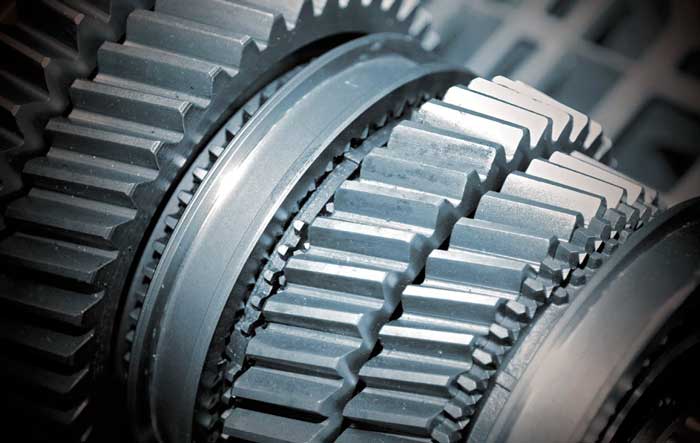
Gears, drives, and motors are essential for efficient cement production, and advancements in materials, design and technology enhance their performance. ICR discusses regular maintenance and smart manufacturing practices, including AI and IoT integration, which ensure optimal operation, reduced downtime and extended lifespan.
In the cement industry, gears, drives and motors play crucial roles in ensuring the efficient operation of machinery and equipment essential for cement production. These components are integral to various processes, including the extraction, crushing, grinding, and transportation of raw materials, as well as the production and packaging of the final cement product.
Gears are mechanical components that transmit torque and rotation from one part of a machine to another. In cement plants, gears are used in a variety of applications, such as in rotary kilns, ball mills, and crushers. They help in reducing the speed and increasing the torque to achieve the desired output for specific machinery. The types of gears commonly used include helical, bevel, and spur gears, each chosen for its specific advantages in terms of strength, efficiency, and suitability for particular tasks.
According to a market research report by IMARC, the global gear manufacturing market size reached US$ 80.0 billion in 2023. Looking forward, IMARC Group expects the market to reach US$ 131.4 billion by 2032, exhibiting a growth rate (CAGR) of 5.5 per cent during 2024-2032.
Drives refer to the mechanisms that provide the necessary power to operate various machines. In the cement industry, drive systems can be mechanical, hydraulic, or electrical. Mechanical drives, such as belt and gear drives, are often used for their simplicity and reliability. Hydraulic drives offer precise control and are used in applications where variable speed and torque are required. Electrical drives, which include variable frequency drives (VFDs), are increasingly popular for their energy efficiency and ability to provide precise speed control. Drives ensure that machinery operates at the optimal speed and torque, enhancing productivity and reducing wear and tear.
Motors are the heart of the drive systems, converting electrical energy into mechanical motion. In cement plants, motors power various machines, such as conveyors, crushers, mills, and fans. The selection of motors—whether AC, DC, synchronous, or asynchronous—depends on the specific requirements of the application, including the need for variable speed control, starting torque, and energy efficiency. Motors must be robust and reliable to withstand the harsh operating conditions typical in cement production environments.
The integration of gears, drives, and motors in the cement industry is essential for maintaining continuous and efficient operations. These components work together to ensure that machinery runs smoothly, minimising downtime and maximising output. Moreover, advancements in technology have led to the development of more efficient and durable gears, drives, and motors, contributing to the overall sustainability and cost-effectiveness of cement manufacturing processes. Their proper selection, maintenance and operation are critical to the productivity and longevity of cement plants.
Advancements and technology
Recent advancements in gear, drive, and motor technology have significantly enhanced the efficiency, reliability, and functionality of these critical components in the cement industry. These technological developments are largely driven by the principles of Industry 4.0 and smart manufacturing, which emphasise automation, data exchange, and the integration of cyber-physical systems. Advancements coupled with the transformative impact of Industry 4.0 and smart manufacturing, have revolutionised the cement industry. These innovations have led to more efficient, reliable and sustainable operations, positioning the industry for continued growth and competitiveness in the digital age.
“Advancements in gear technology have significantly enhanced the efficiency and performance of cement manufacturing processes at Wonder Cement. Modern gears, crafted from high-strength alloys and featuring advanced surface treatments, offer superior durability and wear resistance. This results in reduced friction and energy loss, allowing for more efficient power transmission. Precision engineering and innovative designs enable gears to handle higher loads with greater reliability, minimising downtime and maintenance costs. By integrating these state-of-the-art gear systems, Wonder Cement achieves optimal operational performance, ensuring that our production lines run smoothly and efficiently,” says Piyush Joshi, Associate Vice President – Systems and Technical Cell, Wonder Cement.
“The improved efficiency not only lowers energy consumption but also contributes to a more sustainable manufacturing process, aligning with our commitment to environmental stewardship and operational excellence. The incorporation of advanced technologies, including artificial intelligence (AI) and machine learning (ML), represents a significant innovation in the cement industry. At Wonder Cement, these state-of-the-art tools have been instrumental in optimising operations, reducing energy consumption and enhancing overall productivity,” he adds.
Gears have seen improvements in materials and design. The use of advanced materials, such as high-performance alloys and composite materials, has resulted in gears that are stronger, lighter and more resistant to wear and corrosion. Precision manufacturing techniques, including computer-aided design (CAD) and computer-aided manufacturing (CAM), have enabled the production of gears with tighter tolerances and better surface finishes, reducing friction and improving efficiency. Additionally, innovative lubrication solutions and surface treatments have extended the lifespan of gears, reducing maintenance needs and downtime.
Drives have benefited from the integration of digital technologies. Variable Frequency Drives (VFDs) and intelligent drive systems now offer enhanced control and flexibility, allowing for precise speed and torque adjustments to match the operational demands of cement production processes. These advanced drives are equipped with sensors and connectivity features that enable real-time monitoring and diagnostics, facilitating predictive maintenance and reducing the risk of unexpected failures. The adoption of energy-efficient drives has also contributed to significant energy savings and reduced carbon emissions.
Motors have evolved with advancements in design, materials, and control technologies. High-efficiency motors, such as permanent magnet synchronous motors (PMSMs) and brushless DC motors (BLDCs), offer superior performance and energy efficiency compared to traditional induction motors. Innovations in motor control, including the use of sophisticated algorithms and power electronics, have improved the precision and responsiveness of motor operations. Furthermore, smart motors equipped with IoT (Internet of Things) capabilities can communicate with central control systems, providing valuable data for optimising performance and maintenance schedules.
Industry 4.0 and smart manufacturing have profoundly impacted gears, drives, and motors by introducing connectivity, automation, and data analytics into the manufacturing environment. Smart sensors and IoT devices embedded in these components enable continuous monitoring of their operational status, allowing for real-time data collection and analysis. This data-driven approach facilitates predictive maintenance, where potential issues are identified and addressed before they lead to equipment failure, thereby enhancing reliability and reducing downtime.
The integration of artificial intelligence (AI) and machine learning (ML) algorithms further enhances the capabilities of smart manufacturing systems. These technologies can analyse vast amounts of data to identify patterns and optimise processes, leading to improved efficiency and productivity. For instance, AI-driven optimisation can adjust motor speeds and gear ratios in real-time to match varying loads and operational conditions, ensuring optimal performance and energy usage.
Common issues and troubleshooting
Maintaining gears, drives, and motors is essential for efficient cement plant operations, reducing downtime and extending equipment lifespan. Regular maintenance practices prevent failures and ensure reliability.
Gears require regular inspection and lubrication to avoid wear and tear. Common issues include surface wear, misalignment, and overheating. Proper alignment during installation and regular checks can prevent these problems. Using high-quality materials and maintaining a clean environment mitigates pitting and corrosion.
Drives need regular maintenance to ensure efficient operation. Mechanical drives can suffer from belt and chain wear, which requires inspection and replacement. Hydraulic drives may have leaks; tightening fittings and replacing seals can prevent this. Electrical drives can face motor burnout or VFD failure, prevented by proper wiring and avoiding overloads. Addressing excessive vibration and noise through balancing and alignment checks is also crucial.
Motors are vital to drive systems and require diligent maintenance. Bearing failures, overheating, and electrical faults are common issues. Regular lubrication, adequate cooling, and electrical inspections can prevent these problems. Vibration and noise often indicate misalignment or bearing issues, which can be detected and addressed through vibration analysis.
Troubleshooting techniques involve systematic inspection and analysis. Visual inspections, vibration analysis, thermography, lubrication analysis, and electrical testing are effective methods. Implementing a proactive maintenance strategy with regular inspections, timely lubrication, and condition monitoring enhances the reliability and longevity of gears, drives, and motors in the cement industry.

Indian cement industry applauds budget FY25 for focusing on decarbonisation

Towards an expanding horizon

Advancing Industrial Efficiency

We are excited about the future

Strong branding can create customer loyalty

Indian cement industry applauds budget FY25 for focusing on decarbonisation

Towards an expanding horizon

Advancing Industrial Efficiency

We are excited about the future




